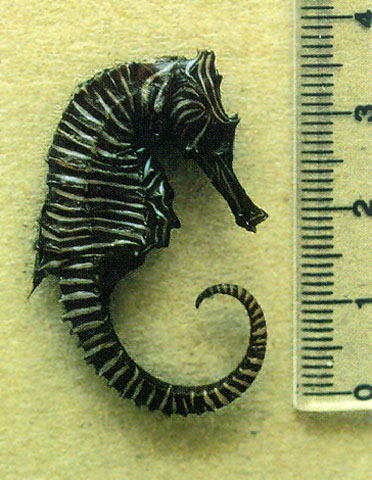| Syngnathidae (Pipefishes and seahorses), subfamily: Syngnathinae |
| 8 cm OT (male/unsexed) |
|
reef-associated; marine; depth range 20 - 69 m, non-migratory |
| Indo-West Pacific: Australia. |
|
Dorsal spines (total): 0-0; Dorsal soft rays (total): 17-17. Description: (based on 3 specimens): Adult height: 7.0-8.0cm. Rings: 11 + 38-39. Snout length: 2.1-2.2 in head length. Dorsal fin rays: 17 covering 2+1 rings. Pectoral fin rays: 15-16. Coronet: medium, conical, with five tiny points on top (not splayed). Spines: very low, small and sharp, or none. Other distinctive characters: prominent sharp eye spine. Color pattern: black (or dark brown) and white striped all over. Description: Characterized by small to moderate, relatively inconspicuous spines/tubercles in head and body (Ref. 90102). |
| Found inshore on reef areas (Ref. 7300). Ovoviviparous (Ref. 205). The male carries the eggs in a brood pouch which is found under the tail (Ref. 205). Also found in sand and mud bottoms, possibly associated with gorgonians (Ref 90102). |
|
Data deficient (DD); Date assessed: 17 August 2016 Ref. (130435)
|
| harmless |
Source and more info: www.fishbase.org. For personal, classroom, and other internal use only. Not for publication.

